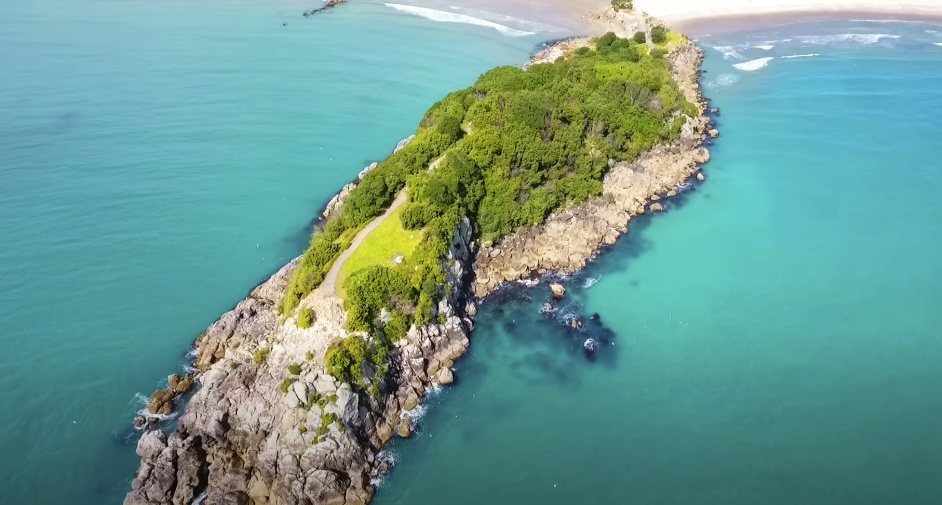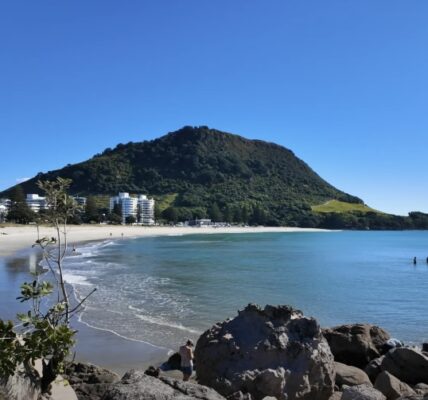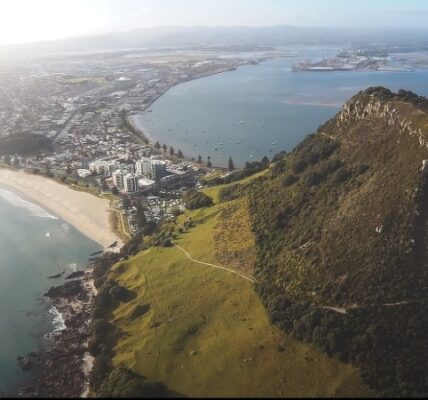Mount Maunganui, affectionately known as “The Mount” by locals, is a coastal town in the Bay of Plenty, New Zealand. It’s famed for its beautiful beaches, vibrant atmosphere, and of course, Leisure Island (Moturiki Island). This article explores the rich history of Leisure Island, Mount Maunganui, its nature trails, and the future plans for a leisure park, providing an educational glance into this iconic location.
The Historical Journey of Leisure Island, Mount Maunganui
Situated off the coast of Mount Maunganui, Leisure Island has been a focal point of both historical intrigue and modern-day recreation. Its evolution from a utilitarian quarry to a cherished leisure destination reflects the dynamic interplay between human activity and natural landscapes.
Early History
Leisure Island, Mount Maunganui, originally known as Moturiki Island, holds a significant place in local Maori history. The island was traditionally used by the Maori for its strategic location and abundant resources. During the early 20th century, the island transformed drastically from a quarry site to a beloved leisure destination.
| Time Period | Events and Developments |
| 1920s-1930s | The island was connected to the mainland via a causeway, making it more accessible. Improved accessibility facilitated the influx of visitors, leading to the island’s emergence as a popular leisure destination. Recreational activities such as picnicking, swimming, and beachcombing flourished during this period. |
| 1940s | Witnessed the construction of a marine zoo and an aquarium, adding significant attractions to the island. These establishments became iconic landmarks, drawing crowds of tourists until their eventual closure in the 1960s. |
Transition to a Public Space
After the closure of the tourist attractions, the focus shifted towards preserving the natural beauty of Leisure Island, Mount Maunganui. Efforts were made to rehabilitate the island and maintain it as a public park, which has been successful to date. This period marked a pivotal shift from commercial use to conservation, emphasizing the importance of environmental preservation in New Zealand.
Archaeological Significance
Archaeological excavations on Leisure Island have unearthed various artifacts that provide insight into the historical usage of the island by Maori communities. These findings underscore the island’s role not just as a leisure spot but as a historically significant site in New Zealand’s cultural landscape.
| Artifact | Description |
| Adzes | Tools used by Maori for shaping wood and stone. |
| Pounamu | Greenstone artifacts symbolizing cultural significance. |
| Fish Hooks | Indicates fishing activities conducted by Maori communities. |
Exploring Leisure Island Today: Tracks and Trails
Leisure Island, Mount Maunganui offers several walking tracks and trails that are popular among tourists and locals alike. Here’s what visitors can explore:
The Loop Track
The Loop Track is a gentle walking path that circles Leisure Island. This track provides visitors with panoramic views of the ocean and The Mount, making it a favorite among those looking for a serene and scenic experience. Key features of the Loop Track include:
- Length: Approximately 2 kilometers
- Difficulty: Easy, suitable for all fitness levels
- Highlights: Ocean views, native flora
Eastern Lookout
The Eastern Lookout is renowned for its spectacular sunrise views. This spot attracts morning joggers and walkers who seek to start their day with breathtaking vistas. Key details about the Eastern Lookout are:
- Accessibility: Easy to reach from the main entrance
- Best Time to Visit: Early morning for sunrise views
- Activities: Photography, jogging, bird watching
Western Plateau
The Western Plateau is the ideal location for sunset enthusiasts. This area not only offers stunning views of the setting sun but also features historical remains of the old aquarium, adding a touch of intrigue to the visit. Important aspects of the Western Plateau include:
- Sunset Views: Best spot on the island for watching the sunset
- Historical Significance: Remains of the old aquarium
- Visitor Amenities: Benches and informational plaques
Biodiversity and Conservation Efforts
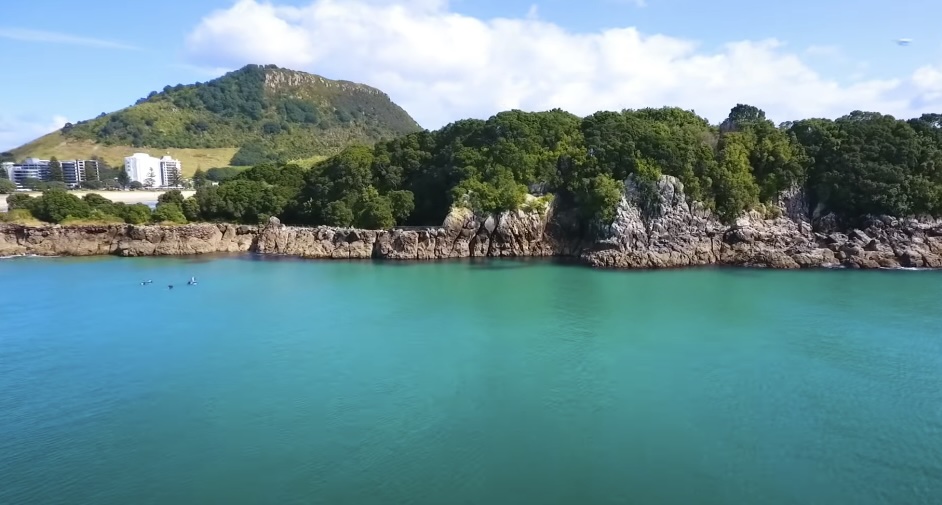
Leisure Island is more than just a recreational area; it is a biodiversity hotspot dedicated to conservation and environmental sustainability. Significant efforts have been made to protect and restore the island’s natural habitat.
Conservation Initiatives
The island’s conservation initiatives focus on eradicating pests and reintroducing native plants. These efforts are crucial for maintaining the ecological balance and supporting local wildlife. Major conservation activities include:
- Pest Eradication: Continuous efforts to remove invasive species
- Native Plant Reintroduction: Planting of indigenous flora to restore natural habitats
- Volunteer Programs: Community involvement in conservation activities
Return of Native Bird Species
Due to these dedicated conservation efforts, there has been a notable return of native bird species to Leisure Island. Visitors can now observe various bird species, adding to the island’s allure. Key bird species making a comeback include:
- New Zealand Dotterel: A native shorebird that has seen a resurgence in population
- Little Blue Penguin: The world’s smallest penguin species, now more commonly sighted
Importance of Biodiversity
The biodiversity on Leisure Island plays a vital role in the ecosystem. The presence of native birds and plants contributes to the island’s ecological health and attracts nature enthusiasts. Key points about biodiversity on the island are:
- Ecological Balance: Native species help maintain the island’s ecological integrity
- Tourism Appeal: Increased biodiversity enhances the visitor experience
- Educational Opportunities: Provides a living classroom for environmental education
Future Developments: Leisure Island Fun Park Plans
In response to increasing tourist interest, new proposals are being discussed regarding the development of a Leisure Island Fun Park. Here’s what has been proposed:
Eco-friendly Attractions
The Leisure Island Fun Park aims to build eco-friendly attractions that blend seamlessly with the natural environment. These attractions are designed with sustainability in mind, ensuring minimal ecological impact.
- Nature Trails: Pathways that allow visitors to explore the island’s diverse flora and fauna.
- Solar-powered Rides: Utilizing renewable energy sources to power amusement rides.
- Green Spaces: Areas dedicated to preserving local vegetation and providing natural habitats for wildlife.
Interactive Educational Displays
Interactive educational displays are a cornerstone of the proposed developments. These displays aim to educate visitors about the island’s history and local wildlife, enhancing their understanding and appreciation of the island.
- Historical Exhibits: Detailed information about the island’s historical significance, including its role in local culture and significant events.
- Wildlife Information Stations: Interactive displays about the island’s unique animal species and their habitats.
- Virtual Reality Experiences: Immersive experiences that take visitors on a journey through the island’s past and present.
Enhanced Visitor Facilities
Improving visitor facilities is a crucial aspect of the Leisure Island Fun Park plans. The goal is to provide a comfortable and enjoyable experience for all visitors.
- Upgraded Pathways: Improved trails for easier navigation and enhanced safety.
- Viewing Decks: Strategically placed decks offering breathtaking views of the island’s landscape.
- Rest Areas: Comfortable seating and shaded areas for relaxation.
Local Council and Community Engagement
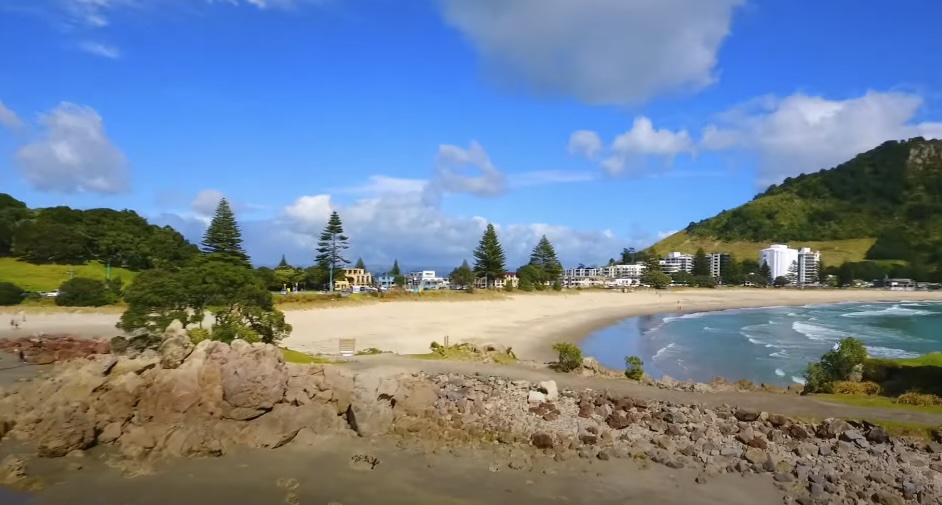
The development of Leisure Island Fun Park is a project that deeply involves the local council and community stakeholders. The primary objective is to ensure that any changes to the island align with the desires of the residents and honor the historical and ecological significance of the site. This approach fosters a collaborative environment where community input is valued and incorporated into the planning process.
Community Consultation Process
The local council has initiated a comprehensive consultation process with the community to gather feedback and suggestions. This process includes a variety of methods to ensure widespread participation and transparency.
- Public Meetings: Regularly scheduled meetings where residents can voice their opinions and ask questions about the proposed developments.
- Surveys: Distributed both online and in print to collect feedback from a broad demographic.
- Focus Groups: Small, targeted groups representing different community interests to provide detailed insights.
Stakeholder Involvement
Stakeholders from various sectors of the community, including historical societies, environmental groups, and local businesses, are actively involved in the planning stages. Their input is crucial to ensuring that the development respects the island’s historical and ecological significance.
- Historical Societies: Provide insights into preserving the cultural heritage of the island.
- Environmental Groups: Ensure that the ecological impact is minimized and local wildlife is protected.
- Local Businesses: Help integrate the development with existing commercial activities, benefiting the local economy.
Respecting Historical and Ecological Significance
One of the main goals of the development on Leisure Island is to respect and preserve its historical and ecological significance. The local council has outlined several measures to achieve this.
| Historical Significance | Ecological Significance |
| Preservation of Historical Sites: Ensuring that key historical landmarks on the island are preserved and | Sustainable Development Practices: Implementing construction and operational practices that minimize environmental impact. |
| Educational Programs: Developing programs and exhibits that educate visitors about the island’s history. | Habitat Conservation: Protecting and enhancing natural habitats to support local wildlife. |
Conclusion
Leisure Island, Mount Maunganui serves as a testament to New Zealand’s commitment to preserving its natural landscapes and cultural heritage. The ongoing conservation efforts, coupled with the proposed development plans, ensure that Leisure Island will continue to be a cherished destination for generations to come. Whether you’re a history buff, nature lover, or simply in search of a peaceful retreat, Leisure Island offers a diverse and enriching experience that is bound to captivate any visitor.
FAQ
A1: Yes, Leisure Island is accessible year-round, and each season offers a unique charm.
A2: To protect the natural environment, certain activities such as camping and fires are prohibited.
A3: The loop track takes approximately 30 minutes to complete at a leisurely pace.
A4: Absolutely! The tracks are family-friendly and there are plenty of spots for children to explore safely.
A5: Visitors are encouraged to adhere to guidelines such as not littering and staying on designated paths. Volunteering for clean-up days is another great way to help.
